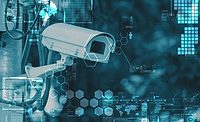A challenge for any organization deploying Internet Protocol (IP) video surveillance is how to quickly locate people, objects or events of interest in video footage. Efficiently finding vital information and best discerning what is occurring in a camera’s field of view is key. A video surveillance solution with analytics powered by artificial intelligence (AI) can help.
Over the last 20 years, video analytics have evolved from offering basic motion detection to offering analytics powered by AI. This technology achieves greater accuracy than any previous generation of analytics. In many cases, AI-powered analytics can distinguish between a person, an animal or a vehicle. This type of intelligence allows you to spend time only on alarms and investigations that matter most.
There’s no question that AI-powered analytics have evolved far beyond previous generations of analytics to deliver highly reliable object tracking, detection and notification of events. However, the focus is often on the efficacy of this technology, while there has arguably been less discussion about how to best leverage it in real-world applications. Here are some of the ways intelligent analytics can help your organization’s daily operations.
Track high-value or suspicious objects
Object removal detection works by triggering an alarm if an object is removed from a user-defined zone. For example, an art gallery can configure this analytic to apply to an area where there is a high-value object, such as a painting or statue. Furthermore, it can be used for equipment monitoring, such as computers or servers in a sensitive server room. Other examples include using it at a financial institution to protect assets or for watching high-value items put on display by a company at a tradeshow or product exhibition.
Receive alerts about suspicious behavior
Conversely, abandoned object detection triggers an alarm if an object placed within a defined zone remains there for longer than the user-defined time allows. This can be useful at an airport where it can help detect if a suspicious bag is left unattended, which could be a security risk. At a bank, the analytic can be used for detecting objects such as skimming equipment left behind at an ATM.
Loitering detection notifies you in real-time when there is suspicious behavior near your organization. Essentially, it provides notification when moving objects (people or vehicles) remain in a defined zone for longer than the user-defined time allows. For example, banks can configure a defined zone around an ATM and set a timeframe. So, the analytic triggers when a moving person is near the ATM after closing time for longer than the user-defined amount of time.
It can also be used to improve customer service. You can set loitering detection for a waiting room area and have the analytic trigger if a person is sitting more than 15 minutes, for example, to help monitor speed of service.
Finally, a tripwire alarm triggers when people or vehicles cross a virtual line. This can be useful around bank vaults or other highly sensitive areas. With COVID-19 restrictions in place, this analytic can send an alert if a person has entered an area that is now off-limits.
Parking enforcement and customer service
Stopped vehicle detection alerts users when vehicles are stopped near a sensitive area for longer than the user-defined time allows. For example, at a quick-service restaurant, it can alert employees in real-time that a customer has arrived for curbside pick-up. It also provides a visual record of all curbside deliveries for future review and investigation. Other businesses and municipal governments can use the analytic to help with parking laws and enforcement. Additionally, it can be used for monitoring airport curbside drop-offs or vehicles waiting near gates.
Intrusion detection
This triggers an alarm the moment a person or vehicle enters into a defined zone. For example, an organization could place an intrusion rule around an important doorway to monitor traffic in and out. It can also be used for supervising sensitive areas in a warehouse, bank or retail store.
As you can see, AI-powered analytics can serve your organization in numerous ways. With security and compliance being more important than ever for businesses and other organizations, these analytics make this job easier by reducing false alarms and alleviating the burden on users.
This article originally ran in Security, a twice-monthly security-focused eNewsletter for security end users, brought to you by Security Magazine. Subscribe here.




.jpg?height=200&t=1673033009&width=200)